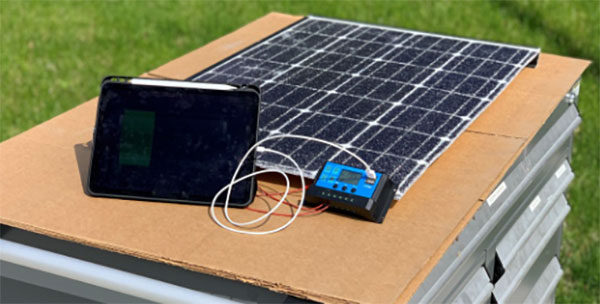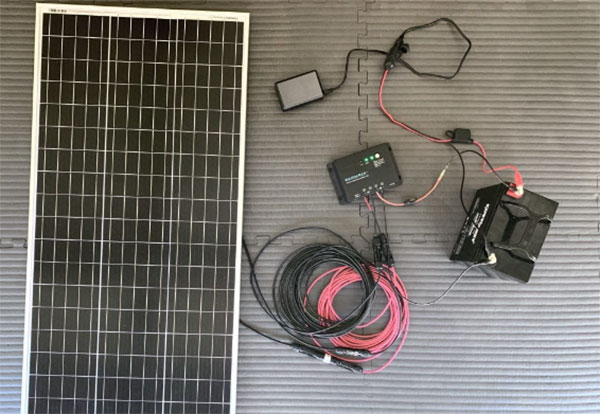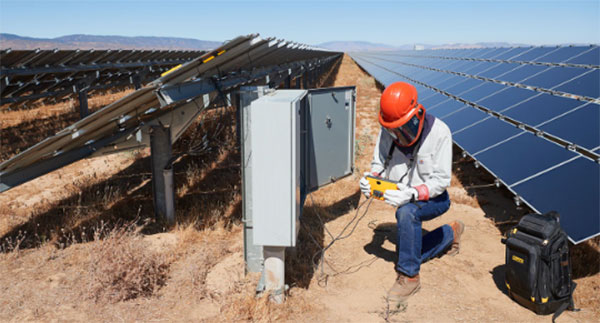Description
The fuse should be placed close to the battery bank in the solar panel circuit for optimal safety and performance.Optimal Placement of Fuses in Solar Panel Circuits
Factors Influencing Fuse Location
The selection of fuse location within solar panel circuits is influenced by a myriad of factors, each playing a crucial role in ensuring safety, efficiency, and longevity of the system. Key factors include system voltage, current capacity, and environmental conditions. Fuses are typically placed close to the battery bank to protect against overcurrent situations that could lead to overheating and potential fires. The optimal location also considers the ease of access for maintenance purposes and the minimal impact on the overall efficiency of the solar panel system.- System Voltage: Solar panel circuits operating at higher voltages, typically in the range of 100V to 600V, require fuses that can handle these voltages without degradation.
- Current Capacity: The current capacity of the system, often measured in amperes (A), directly influences the fuse rating. A system with a capacity of 20A to 40A might require fuses rated slightly higher to accommodate surge currents without tripping unnecessarily.
- Environmental Conditions: Exposure to extreme temperatures, moisture, or corrosive elements requires the use of fuses made from materials that can withstand such conditions, ensuring a lifespan of 10 to 15 years for the fuse.
Comparative Analysis of Fuse Placement Options
When comparing fuse placement options, two primary configurations emerge: Series Placement and Parallel Placement. Each configuration offers distinct advantages and challenges, impacting the system's overall performance and safety.Series Placement
Series placement of fuses is characterized by their integration into the circuit in a manner where the current flows through them in sequence. This configuration is advantageous for its simplicity and effectiveness in protecting against overcurrent by isolating the affected segment of the circuit.- Advantages: Simplifies the circuit design and enhances the ease of identifying and replacing blown fuses. Ideal for circuits with uniform current requirements.
- Challenges: Voltage drop across the fuse can lead to efficiency losses, especially in high-current applications. This placement may not offer comprehensive protection in complex circuits with varying current demands.
Parallel Placement
In parallel placement, fuses are configured alongside the main circuit paths, providing a bypass route for the current in case of an overcurrent event. This setup is particularly useful in circuits with multiple branches, ensuring that an issue in one branch does not affect the operation of others.- Advantages: Offers targeted protection for individual branches, minimizing the risk of a complete system shutdown due to a fault in a single branch.
- Challenges: Requires more careful planning and design to ensure each branch is adequately protected. The complexity of the circuit can increase, potentially raising the cost of the system due to the need for additional fuses and more intricate wiring.
Technical Specifications for Fuses in Solar Panel Circuits
Understanding the technical specifications for fuses in solar panel circuits is crucial for ensuring the safety, efficiency, and longevity of the system. This section delves into the types of fuses suitable for solar panel circuits and guidelines for determining the correct fuse size and rating.Types of Fuses Suitable for Solar Panel Circuits
Solar panel circuits demand fuses that can handle specific electrical characteristics, including high DC voltages and current. The selection of the fuse type is influenced by factors such as maximum system voltage, current rating, and interrupting rating. DC Fuses Designed to interrupt high DC voltages, crucial for solar panel circuits. Circuit Breaker Fuses Combine the functionality of a switch and overcurrent protection. Suitable for applications where manual disconnect and reset are advantageous, supporting up to 1000V DC. Polymeric Positive Temperature Coefficient (PPTC) Fuses Self-resetting fuses that offer continuous overcurrent protection and are effective for low-current applications, typically below 60V DC. Key considerations include the fuse's ability to withstand environmental conditions, with materials that offer durability and resistance to corrosion, ensuring a lifespan of over 20 years in outdoor conditions.Determining the Correct Fuse Size and Rating
The process of determining the correct fuse size and rating involves calculating the maximum current expected in the circuit and considering the system's voltage requirements.- Maximum Current Calculation: The fuse rating should be approximately 125% of the system's maximum operating current to accommodate temporary surges without tripping. For a system with a maximum current of 20A, a fuse rating of 25A would be appropriate.
- Voltage Rating: The voltage rating of the fuse must exceed the maximum system voltage to prevent breakdown.
Installation Guidelines for Fuses in Solar Panel Circuits
Proper installation of fuses in solar panel circuits is pivotal for ensuring operational efficiency, safety, and longevity of the solar power system. This guide outlines a step-by-step process for fuse installation and highlights common mistakes to avoid.Step-by-Step Installation Process
- Identify the Correct Fuse and Holder: Start by selecting a fuse and holder that match the system's voltage and current requirements. For a solar system operating at 600V DC with a maximum current of 20A, choose a fuse rated for at least 25A and 650V DC.
- Turn Off the System: Ensure all components are powered down to prevent electrical shock. This includes disconnecting the solar panels and batteries.
- Install the Fuse Holder: Mount the fuse holder at a location near the battery bank or the solar charge controller to minimize unprotected wiring.
- Insert the Fuse: Place the fuse into the holder, ensuring a tight and secure fit. Check for any signs of damage or improper fit.
- Connect Wiring: Route the system's wiring through the fuse holder, adhering to the correct polarity and ensuring secure connections. Use quality cables with adequate insulation to handle the expected current.
- Test the Installation: Once the fuse is installed, gradually power up the system and monitor for any issues. Use a multimeter to verify that the voltage across the fuse matches the system's operational voltage.
- Regular Maintenance: Schedule regular checks to ensure the fuse and holder remain in good condition, free from corrosion or damage.
Common Installation Mistakes and How to Avoid Them
- Incorrect Fuse Rating: Installing a fuse with too low a rating can lead to nuisance tripping, while too high a rating may not protect the circuit effectively. Avoid this by calculating the correct fuse rating, adding a 25% buffer to the system's maximum current.
- Poor Quality Connections: Loose or corroded connections can cause overheating and reduce the efficiency of your solar power system. Ensure all connections are tight and use corrosion-resistant materials to maintain optimal conductivity.
- Inadequate Environmental Protection: Fuses and holders exposed to harsh weather without adequate protection can fail prematurely. Select components rated for outdoor use and consider additional protective enclosures if necessary.
- Ignoring Polarity: Incorrect wiring polarity can damage solar components and reduce system performance. Always check and double-check wiring polarity during installation and maintenance.
- Skipping Regular Inspections: Failing to regularly inspect the fuse and its connections can lead to unnoticed issues. Implement a routine maintenance schedule to check and replace the fuse as needed, ensuring continuous protection and efficiency.
Maintenance and Troubleshooting of Fuses in Solar Panel Circuits
Ensuring the optimal performance of solar panel circuits involves routine maintenance and effective troubleshooting of fuse-related issues. This guide offers essential tips for maintaining fuses and diagnosing common problems that may arise.Routine Maintenance Tips
- Regular Inspection: Conduct a thorough inspection of fuses and holders every 6 months to check for signs of wear, corrosion, or damage. Ensure that the environment has not adversely affected the fuse's integrity.
- Clean Contacts: Remove any dust, debris, or corrosion from fuse holders and contacts with a clean, dry cloth. Use a non-corrosive cleaner if necessary to maintain good electrical contact and prevent overheating.
- Check Fuse Ratings: Verify that the fuses installed match the system's requirements.
- Test for Continuity: Use a multimeter to test the fuse for continuity.
- Monitor System Performance: Keep an eye on the solar panel system's performance. Unexpected drops in efficiency may indicate a fuse-related issue, such as a partial blow or degraded connection.
Troubleshooting Common Fuse-Related Issues
- Frequent Blowing of Fuses: If fuses blow regularly, this may indicate an overcurrent situation or a short circuit in the system. Check for wiring faults or components drawing more current than expected. Ensure the system's current does not exceed 80% of the fuse's rating for optimal performance.
- Corrosion or Loose Connections: Corroded or loose connections can cause increased resistance and heat, leading to fuse failure. Tighten all connections and replace any corroded parts to prevent future issues.
- Mismatched Fuse Rating: Using a fuse with an incorrect rating can lead to unnecessary tripping or inadequate protection. Re-evaluate the system's requirements and ensure the fuse rating appropriately matches the system's maximum current plus a 25% safety margin.
- Overheating: Fuses that overheat even without blowing could indicate a poor connection or an undersized fuse. Inspect the connections for tightness and ensure the fuse's rating is sufficient for the system's demand.







